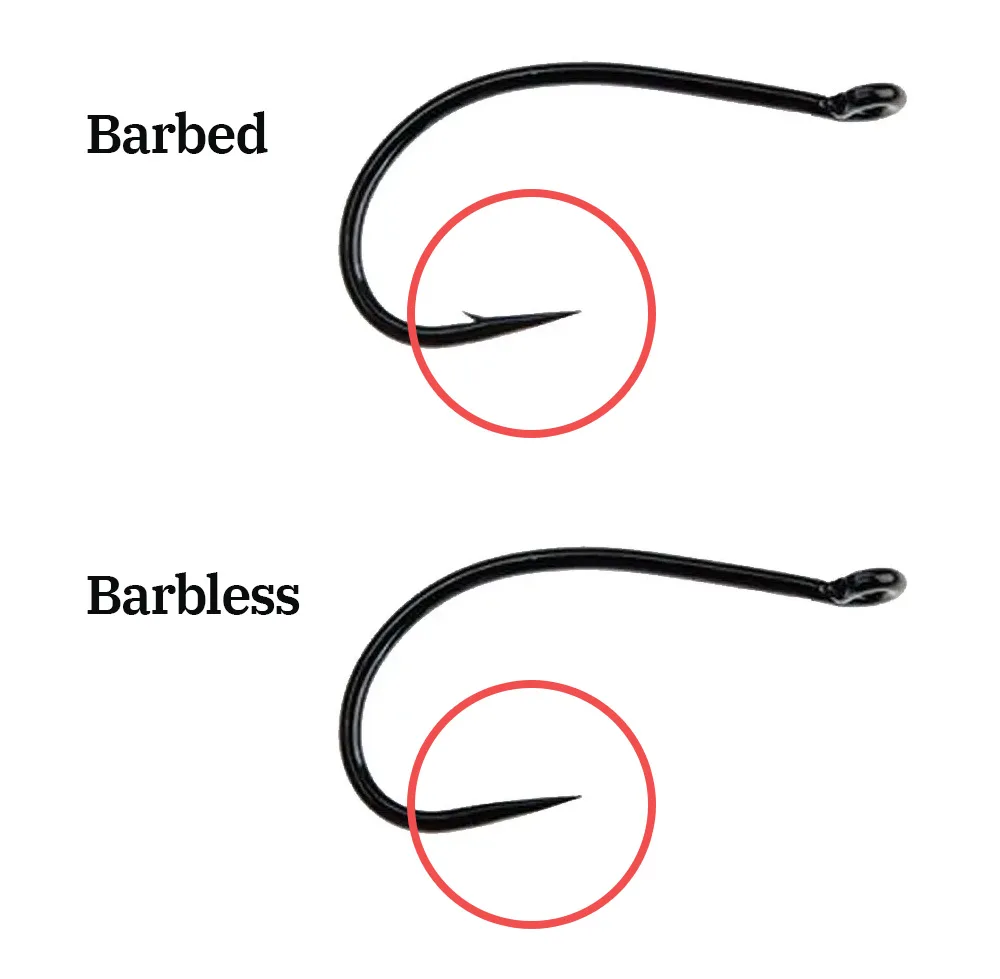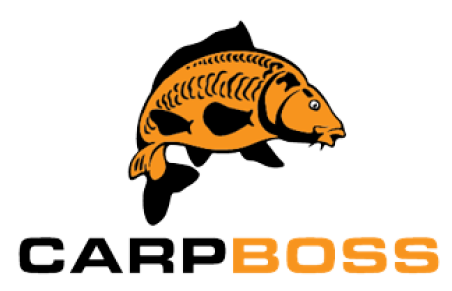I covered various topics about the hooks. Such as how to prevent hooks from rusting and how various fishing hook colors can affect your experience. Recently, another topic worth discussing was raised. It was brought to my attention that barbed hooks are banned by law in Oregon. Since I am not a US citizen nor have I ever fished outside of Europe, I decided to take a closer look into this. So let’s see what Oregon barbless hook law says for fishing on waters such as Gilbert River and Columbia River, two very beautiful rivers I’ll have to visit sooner or later!
Barbless Hook Definition
This is a type of fishing hook that lacks the small protrusion, or “barb,” located on the shank of traditional hooks. This design feature allows for easier removal of the hook from the fish. This minimizes injury and stress, which is especially important for catch-and-release fishing practices.
Barbless hooks are often required or recommended in certain fishing areas. This is a way of promoting fish conservation and enhancing the survival rates of released fish. They are typically used in angling for species such as chinook salmon, steelhead, sturgeon, and trout. These regulations are in place to mandate their use and ensure the ethical treatment of fish during recreational fishing.

Image taken from FlyFish Circle
Overview of Fishing Regulations in Oregon
Fishing regulations in Oregon are designed to ensure the conservation of fish populations while providing recreational opportunities for anglers. The regulations are outlined in the 2021 Oregon Sport Fishing Regulations, which detail specific rules for various zones, including the Columbia River, Snake River, and Willamette River.
One notable aspect of Oregon’s fishing regulations is the allowance of barbed hooks for targeting species such as salmon, steelhead, and trout in designated areas. Additionally, seasonal closures may be enacted to protect vulnerable fish populations. Especially during critical spawning periods when waters are full of fish eggs. For instance, closures may occur from July 15 to September 15 to safeguard upriver summer steelhead.
As we delve deeper into the specific regulations for different zones, anglers need to stay informed about current requirements and practices to promote sustainable fishing. In a certain way, this is also protecting Oregon’s natural resources.
General Restrictions for Anglers in Oregon – Including the Barbless Hook Law
Angling License
In Oregon, anglers must obtain a valid fishing license issued by the Oregon Department of Fish and Wildlife (ODFW). The licensing requirements vary based on factors such as age, residency status, and specific fishing activities.
Generally, all anglers aged 12 and older must possess a license. Youth under 12 can fish without one but must be accompanied by a licensed adult. Additionally, specialized endorsements, such as the Two-Rod Angling Validation, are available for those wishing to use more than one rod.
It is crucial for anglers to familiarize themselves with the specific angling rules associated with their chosen fishing zones to ensure compliance and protect local fish populations. Angling Licenses can typically be purchased online, at retail outlets, and through ODFW offices.
Season Limitations
Along with the additional regulations governing ocean salmon sport fishing, there are specific season limitations that anglers must adhere to.
From March 15 through May 15, 2024, the waters from Cape Falcon to Humbug Mountain will be open for all salmon species, with the notable exception of coho salmon, which remains closed. Anglers are permitted a daily bag limit of two salmon, provided they do not exceed this count, and must utilize single-point barbless hooks. Additionally, there are seasonal closures and restrictions. For instance, fishing for adipose fin-clipped spring Chinook salmon is allowed from January 1 to July 31, while fall Chinook salmon fishing is permissible during August and October, as well as through December.
Furthermore, specific areas, such as the section from the Big Creek railroad trestle bridge, will have designated closures in September. This highlights the importance of understanding and complying with these regulations to promote sustainable fishing practices.
Restriction on Fishing Gear Types
When fishing in designated areas, it is essential to adhere to specific gear restrictions. For instance, while fishing for adipose fin-clipped spring Chinook salmon from January 1 to July 31, anglers may utilize bait, which is allowed throughout this period. However, during the fall Chinook season from August 1 to 31 and October 1 to December 31, restrictions come into play that are crucial for responsible angling.
A significant regulation to note is the anti-snagging regulation, which is enforced from August 1 to 31 and October 1 to 31. It applies specifically to portions of the Gnat Creek downstream from the hatchery weir deadline. During this time, anglers are expected to use fishing gear that minimizes the potential for snagging. This promotes a more ethical approach to fishing and reducing harm to fish populations.
For those participating in the offshore longleader gear fishery, there are specific requirements that dictate the types of gear permitted. Anglers must utilize longleader gear, with a daily bag limit of 12 fish, limited to designated species such as yellowtail, widow, and canary rockfish, among others. Importantly, trips for offshore longleader gear fishing cannot be combined with traditional bottom fish trips, maintaining clear guidelines for anglers.
For any more details or additional information, please follow this link – Oregon Department of Fish and Wildlife Contact
Oregon Barbless Hook Law per Fish Species
In Oregon, the barbless rules are primarily aimed at protecting vulnerable fish species. Specifically those that are listed under the Endangered Species Act (ESA). As of January 1, 2013, anglers are required to use barbless hooks when fishing for salmon and steelhead in the Columbia River and its tributaries, as outlined in the state’s regulations. Below are three of the most common fish species affected by this law:
- Chinook Salmon (Oncorhynchus tshawytscha)
The barbless hook rule is crucial for Chinook salmon, particularly in the Columbia River fisheries and its tributaries. This species has seen fluctuating populations and is often the focus of angling efforts. The intention behind the barbless hook requirement is to minimize injury and reduce mortality rates for released fish. - Coho Salmon (Oncorhynchus kisutch)
Similar to Chinook, the Coho salmon is another species significantly impacted by the Oregon barbless hook law. Coho is targeted during various seasons, and the use of barbless hooks helps ensure the successful catching and release of fish with minimal harm. This is particularly important as Coho populations can be sensitive to fishing pressures. - Steelhead (Oncorhynchus mykiss)
The barbless hook regulation is also applicable to steelhead fishing. Steelhead, which are classified as a trout species, are frequently caught and released in Oregon steelhead fisheries. The implementation of barbless hooks is intended to enhance survival rates for released steelhead, especially in light of increasing interactions between angling practices and conservation efforts.
Types of Hooks Allowed by The Oregon Barbless Hook Law
Under the Oregon Barbless Hook Law, specific guidelines dictate the types of hooks that anglers may use while fishing in designated areas.
- Single-Point Barbless Hooks
Anglers are permitted to use single-point barbless hooks for all fishing activities. - Multiple-Point Barbless Hooks
Anglers can also use multiple-point barbless hooks, but they must comply with size restrictions. This includes treble hooks, which may be used as long as they do not have barbs. - Single-Point Hooks (with size restrictions)
For salmon and steelhead fishing, single hooks larger than 1 inch in gap are prohibited. Anglers must ensure that the hooks they select fall within this size limit to comply with regulations. - Multiple-Point Hooks (with size restrictions)
Similar to single-point hooks, treble point hooks larger than 9/16-inch in the gap are not allowed when fishing for salmon and steelhead. - Double or Treble Hooks
Although these hooks can be used, they are classified as one hook if they are attached to a single shank. Therefore, regulations concerning the number of hooks allowed still apply. - Weight Attachment
When using hooks that require weight, anglers must ensure that any added weight, if not part of a conventional lure, is attached above the hooks. Moreover, specific rules dictate that weight must be positioned at least 18 inches above the uppermost hook when using larger single-point or multiple-point hooks.
The List of All The Waters Where Anglers Must Adhere to the Oregon Barbless Hook Law
As of January 1, 2013, anglers in Oregon are required to adhere to barbless restrictions for salmon and steelhead fishing in the following waters:
- Columbia River Fisheries (where Oregon and Washington share a border)
- Lower Willamette River (up to the falls at Oregon City)
- Includes the Multnomah Channel and Gilbert River
- Clackamas River (up to the McLoughlin Boulevard bridge between Gladstone and Oregon City)
Please note that the Sandy River is not included in this barbless hook regulation.
